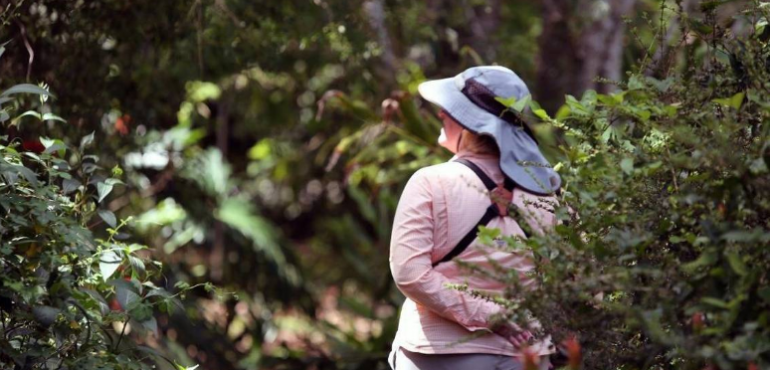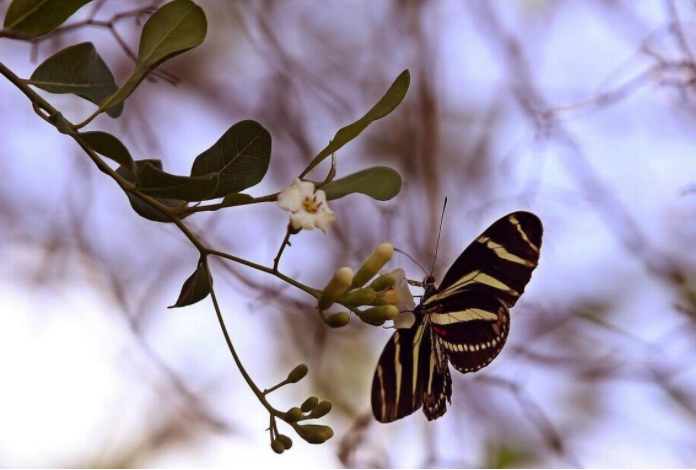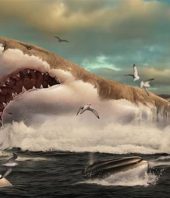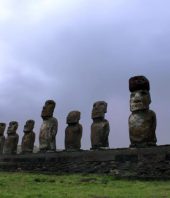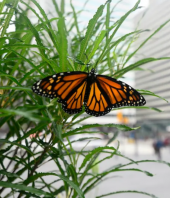Every year when summer temperatures sizzle and the rest of South Florida heads inside, a dedicated crew of citizen scientists ventures into the buggy heat to do an increasingly difficult job: count butterflies.
For the last quarter century, the North American Butterfly Association has tallied the nation’s population of butterflies three times a year, including the Fourth of July butterfly count now occurring in Florida through July. But across the nation, and particularly in Florida, finding butterflies to count is getting more difficult as habitats continue to vanish and climate change makes butterflies’ brief lives ever more perilous.
“Every single day there are fewer butterflies in the United States than there were the day before. You don’t have to be a genius to figure it out,” said geneticist Jeffrey Glassberg, NABA’s president and founder.
Nowhere is that more evident than among more specialized butterflies, like the many imperiled in South Florida, that live on an ecological razor’s edge balanced between their dependency on particular plants and fragmented populations. Of the 160 to 180 species found in the state, about two dozen are in trouble, among the highest concentration of threatened butterflies in the U.S. Now impacts from climate change — increased temperatures or sea rise that threaten host plants — may be driving them closer to the edge.
“Once upon a time I wasn’t happy unless we [counted] 50 species,” said wildlife biologist and butterfly expert Mark Salvato, who for the last 15 years has organized counts from Key West to Jacksonville. “Last year, I had 32.”
The count is modeled on the National Audubon Society’s popular Christmas Day Bird Count and started in the 1970s by the California-based Xerces Society, which works to protect pollinators. NABA took over in 1993, a year after the organization was formed. The counts are organized around 15-mile-wide circles and are often conducted in the same locations — Key West, Key Largo, Homestead or Coral Gables — to provide some consistency.
Linda Cooper, who drives from Orlando every year to help run counts in Key Largo and Homestead, said locations are selected for reliable habitat, meaning preserves, state parks or homes with well-tended butterfly gardens. So far this year, teams visited the old Orchid Jungle attraction at Hattie Bauer Hammock and Mary Krome Bird Preserve near Krome Avenue and Avocado Drive. Last weekend’s rain shut down counts around Coral Gables and the Deering Estate.
Because of its warm weather, South Florida was always considered a mecca for rare butterflies. When an amethyst hairstreak, a rare tree-inhabiting bluish purple butterfly, turned up in Castellow Hammock Park near the Redland in 2004, it drew butterfly enthusiasts for days.
“You expect that with rare birds, but that was one of the first butterflies,” Salvato said.
The protection of butterflies has not always ended well in part because what drives them to extinction can sometimes be complicated. The Miami Blue once inhabited much of the South Florida coast but can now only be consistently found in the Marquesas, islands west of Key West.
In 2014, the U.S. Fish and Wildlife Service added two butterflies, the Bartram’s hairstreak and Florida leafwing, to the endangered species list. The listing designated critical habitat, with rules for maintaining it. But critics have often said the designation does little in reality to protect the butterflies and their habitat on private land. After the University of Miami sold the last large tract of pine rockland — the butterflies’ only habitat — to a Palm Beach County developer, he quickly unveiled plans for a Walmart shopping center and nearly 1,000 apartments. The service is now finalizing a conservation plan that carves the 90-acre forest into two 20-plus acre preserves.
“The Schaus’ swallowtail has been listed for a long time and it’s no better off,” Glassberg said. “People have this misguided but understandable view that if someone takes a meadow and puts in a parking lot, that the butterflies just move somewhere else. But that’s not true. The butterflies are removed from the planet. You’ve just decreased the population of the world’s butterflies.”
Since he started counting butterflies in Florida, Salvato said both the number and diversity have declined. Because they react so quickly to changes, butterflies have been used to detect effects from climate change, which can occur faster than with mammals or birds. Warming temperatures prompted the furry brown three-spotted skipper, which looks more like a moth and feeds on grasses, to head north to Gainesville. A decade ago it was not seen outside Miami-Dade County, Salvato said. The Fulvous hairstreak, another brown butterfly that feeds on Brazilian pepper, is now showing up north of Melbourne.
The rarer butterflies found only in South Florida have not followed their lead in expanding their range. Sometimes they don’t even turn up in historic ranges where they should be.
“Some butterflies that shouldn’t be a rarity are a rarity like the Miami Blue,” Salvato said. “I’m hoping somebody can get to the biology of these butterflies and understand what caused them to blink out in their historic range.”
In the meantime, there’s the count, which isn’t getting any easier for its aging corps of volunteers.
“You may get ticks. You may get mosquito bit. People have to be pretty dedicated to stick with it,” said Cooper, who just turned 76 and whose husband helped organize counts until his death last year. “Some of my participants are older than me and out there with hip issues and knee issues and they just watch where they walk.”
Attorney Dennis Olle is both a birder and butterfly enthusiast and describes a task that is clearly more meticulous.
“It’s not like driving down 95 and seeing a kettle of turkey vultures,” he said. “When you’re dealing with butterflies, it’s on the ground and you have to walk every foot of that.”
It’s also one that is critical for South Florida’s wild lands.
“It’s sort of an early warning device. ... If you can’t find them, it doesn’t mean they’re extinct, but boy if they’re not there, you gotta ask what’s going on,” he said. “It’s a crude instrument, but you gotta be there looking.”
For more information about the counts, visit miamiblue.org or www.naba.org.
Source: Miami Herald, Full Article

